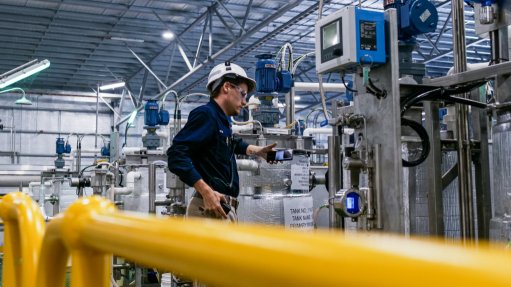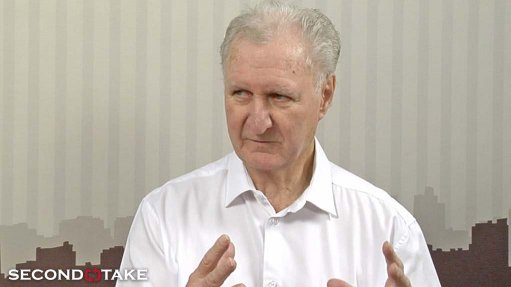How do you manage an overburdened grid? Electricity 4.0 provides some answers
This article has been supplied by the author and has not been written or solicited by Creamer Media. It may be available only for a limited time on this website.
By Taru Madangombe, Vice President: Power and Grid for Middle East and Africa at Schneider Electric
Energy transition and innovation are inherently interdependent. If one looks at the history of the energy ecosystem, initial discussion around electricity focused on the supply side of the value chain. However, with the time, this changed as the times evolved, from pioneers Alessandro Volta and Michael Faraday in the 1800s (Electricity 1.0) to mass electricity by the end of the 19th century (Electricity 2.0); electricity production was driven by demand.
Then there was the development of the first practical solar cells in the 1950s and with it the first digital technologies (Electricity 3.0). Today, in light of the energy transition, it is paramount that we equally focus on both supply and demand to reach our sustainability targets.
How do we do this? Electricity 4.0, which represents the convergence of electric and digital at scale, empowering electricity systems to become greener and smarter. Furthermore, it allows for distributed energy resources (DERs) that provide reliable power provision and resultant grid infrastructure measures to avoid energy wastage.
Our current energy landscape certainly needs to be driven by the fundamentals of Electricity 4.0. In South Africa, DERs are being added to businesses and households daily. Power utility, Eskom says calculations show that rooftop solar’s contribution has increased from 2,265MW in July 2022 to 5,204MW in December 2023. A massive number.
Readying the grid
The above renewable energy generation technologies appear to be placing additional strain on the distribution network which was initially designed for one-way electricity flow. As more consumers become prosumers, generating and potentially selling electricity back to the grid, the challenges of managing low voltage networks (LV) become more complex.
South Africa’s grid, like most utilities globally, was conventionally designed to transport electricity from remote generating regions like Mpumalanga, to the rest of the country (such as Gauteng) which required this electricity demand to drive the economic activities, with long high voltage (HV) infrastructure that reach cities and towns and LV networks which support distribution of electricity to our homes.
This means that the grid was not designed to transport electricity in the opposite direction (like it is now when one is self-generating onsite) due to the prevalence of LV infrastructure which can be constrained by this excess electricity capacity generated onsite.
And whilst medium voltage (MV) and HV infrastructures have seen some evolution with the introduction of advanced distribution management systems (ADMS) managing large inflows of utility-scale renewable energy systems at distribution level, we now require similar technologies to manage the complexities at low voltage levels.
Without adequate infrastructure and management systems in place, the stability and reliability of the grid could be compromised.
Electricity 4.0 can alleviate some strain
This is where Electricity 4.0 comes into play; at its core it leverages technology to enable sustainability and improved grid operations. Key components of Electricity 4.0 include:
- Renewable energy integration - facilitating the seamless integration of DERs such as solar and wind.
- Smart grid technologies - implementing advanced grid technologies that enables better system operation, higher energy efficiency, and improved management of generation and storage systems.
- Decarbonisation strategies - embracing a lifecycle approach to strategise, digitise, and decarbonise the energy sector supports sustainability goals and reduces greenhouse gas emissions.
In essence, Electricity 4.0 represents an overarching approach to modernising the energy sector, balancing supply and demand. It also provides some solutions to an overextended grid by ensuring that supply and demand, and its various voltage iterations, are managed smarter.
Comments
Press Office
Announcements
What's On
Subscribe to improve your user experience...
Option 1 (equivalent of R125 a month):
Receive a weekly copy of Creamer Media's Engineering News & Mining Weekly magazine
(print copy for those in South Africa and e-magazine for those outside of South Africa)
Receive daily email newsletters
Access to full search results
Access archive of magazine back copies
Access to Projects in Progress
Access to ONE Research Report of your choice in PDF format
Option 2 (equivalent of R375 a month):
All benefits from Option 1
PLUS
Access to Creamer Media's Research Channel Africa for ALL Research Reports, in PDF format, on various industrial and mining sectors
including Electricity; Water; Energy Transition; Hydrogen; Roads, Rail and Ports; Coal; Gold; Platinum; Battery Metals; etc.
Already a subscriber?
Forgotten your password?
Receive weekly copy of Creamer Media's Engineering News & Mining Weekly magazine (print copy for those in South Africa and e-magazine for those outside of South Africa)
➕
Recieve daily email newsletters
➕
Access to full search results
➕
Access archive of magazine back copies
➕
Access to Projects in Progress
➕
Access to ONE Research Report of your choice in PDF format
RESEARCH CHANNEL AFRICA
R4500 (equivalent of R375 a month)
SUBSCRIBEAll benefits from Option 1
➕
Access to Creamer Media's Research Channel Africa for ALL Research Reports on various industrial and mining sectors, in PDF format, including on:
Electricity
➕
Water
➕
Energy Transition
➕
Hydrogen
➕
Roads, Rail and Ports
➕
Coal
➕
Gold
➕
Platinum
➕
Battery Metals
➕
etc.
Receive all benefits from Option 1 or Option 2 delivered to numerous people at your company
➕
Multiple User names and Passwords for simultaneous log-ins
➕
Intranet integration access to all in your organisation




















